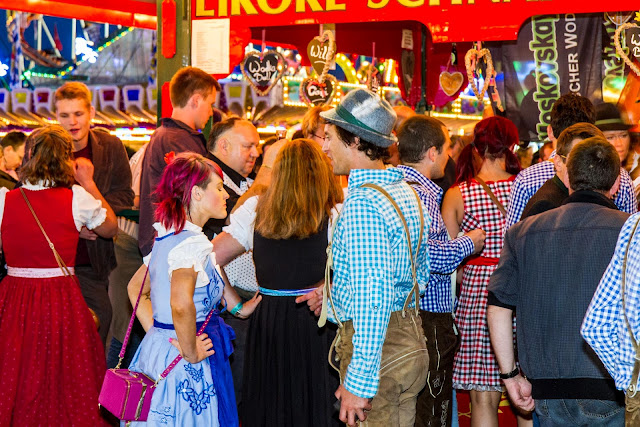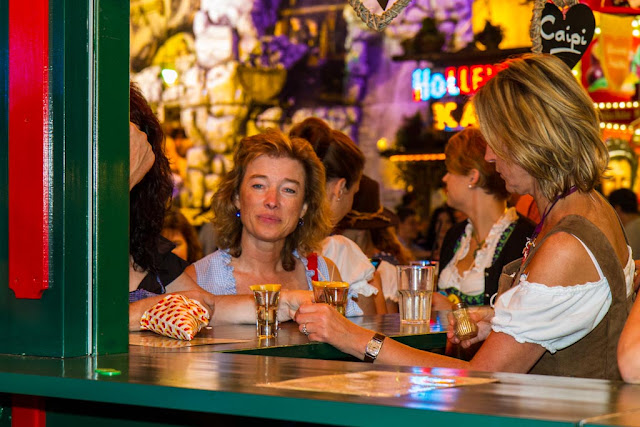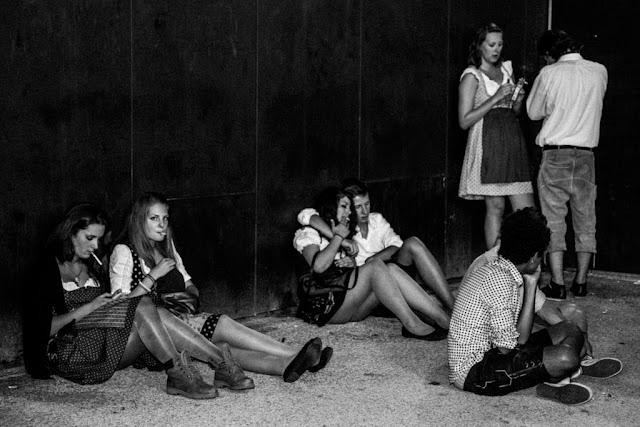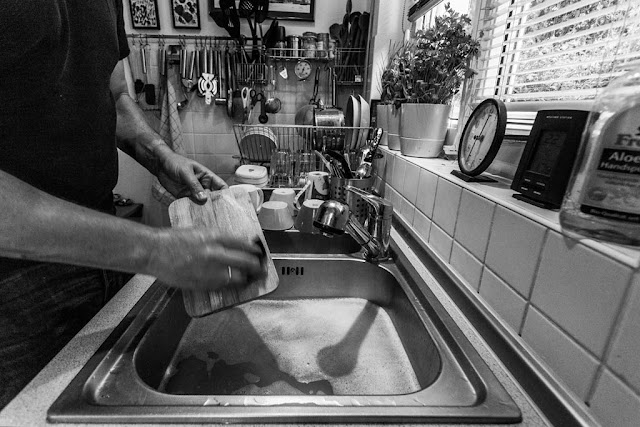I have been engaged in an ongoing internal debate about the use of colour in my work for Social Documentary, initially embarking on an entirely B&W course only to pause, take stock and switch back to colour. The impulse towards B&W came from two stimuli, experience of mono in Landscape and a desire to further explore, plus a realization that most of the photographic work referenced in the course was Black and White. The former was a good idea, but the latter rather stupid, I need to learn from other photographers not ape them.
However, the work of leading photographers is a good source of inspiration. This morning I spent an hour or so looking through a couple of volumes of Martin Parr's work, "The Last Resort" and "Small World". In both these volumes I see an ironic and yet humorous study of people at their leisure, small jokes abound and although he is often sending up the people in the frame, I believe he is sympathetic to them. What interested me was the visual style, especially in the mid 80's volume, The Last Resort. Parr is not frightened of saturated colour, he revels in it. He also engages very closely with his subjects, people fill the space in frame, he is clearly entering peoples personal space. He also gets down to their level, it is clear that he takes his shots kneeling or at least from a vantage point that looks slightly up at the subjects. This provides a sense of immediacy with the subjects, viewing them I feel as if I am in the frame. I cannot confirm this fully, but I am pretty sure he is also using flash to maintain the strong colour - indeed the shadows on many of the shots come from more than one angle suggesting a camera mounted flash.
I start to see many parallels between Parr's work and what I am trying to achieve with my study of the fest. I don't have his experience and observational skills, but have a similar desire to capture people having fun balanced with the squalor or tackiness of the place they are in, a study of bad taste. I walk around looking for that chance encounter with the ridiculous or the tragic superimposed against the mad colours and brilliant electric lights of the fair ground. Colour is now the sauce that enlivens my images, rather than an intrusion. Managing this kaleidoscopic is not possible, almost every way I look contains a full spectrum. I am now steering towards increasing this, adding saturation in post, but most importantly I am using a flash gun in almost all of my shots, attempting to balance foreground with background. This was not an easy decision, it feels rather like cheating in the noble pursuit of Social Documentation and also draws a lot of attention to someone who wants to fade into the background.
There is an additional element in using flash, it imparts a certain look to the images, a postcard aesthetic of bright strong colours. It also has an immediacy, people in the foreground pop out of the image, again not a natural look, but a distinctly stylized one that works in this context. The photo below illustrates this well. The guy on the right got in really close and tried to put his hand over my flash gun for a joke. He was too slow and became the photo. He is blurred, this is unavoidable, I still must expose for the background. I am only using the flash to add colour to the foreground, I am not using it as a prime source of light. This is a 1/30s exposure.
Another example below, although here I have got the mid field exposure wrong. I set the camera to manual and exposed for the sky to avoid it blowing out and then hoped the flash would fill the foreground. It did not quite work, but I am still pleased with the look of this photograph and the contrast between the girls on the right and the couple on the left. I know who is having the most fun.
As night really falls this technique gets progressively harder. Here the exposure is 1/10s at f/5.6 and ISO 800. The flash has frozen the foreground action whilst the background blurs a little. Just after I took this the girl slapped the guy, they were not happy bunnies!
10 minutes later and I am at 1/8s, f/5.6 and now ISO 1600. Not very sharp this one, but still OK, the girls in their heals eating next to a pile of garbage, Parr territory (I hope).
This is beginning to come together, I am getting shots that will work with the concept I am formulating. On Sunday evening or Monday I plan to take stock and pull together a sample set of 12 and see where any gaps exist or where I might improve. The fest still has a week to go and I am off work Wednesday-Friday next week. That said I will need to become prescriptive about what I want to achieve as it will be another year before this comes around again. Although, the Hofbrauhaus in downtown looks like the fest most days so I could cheat and grab a shot or two there if I am really missing something.





















































